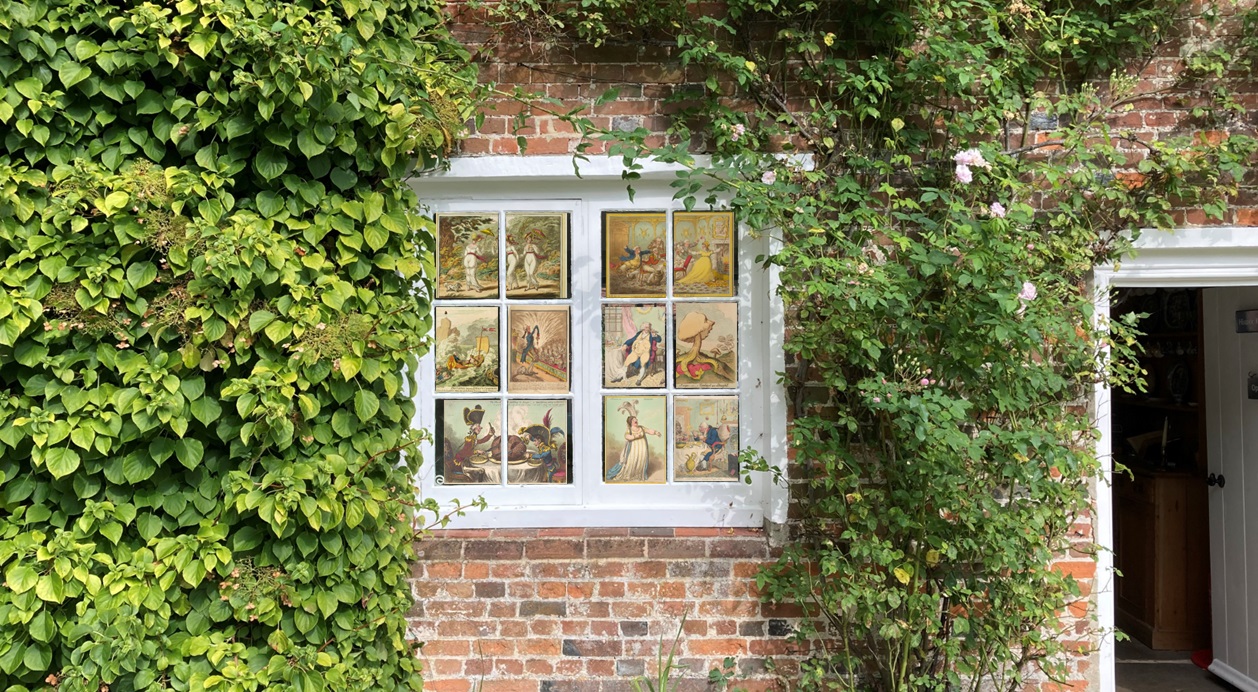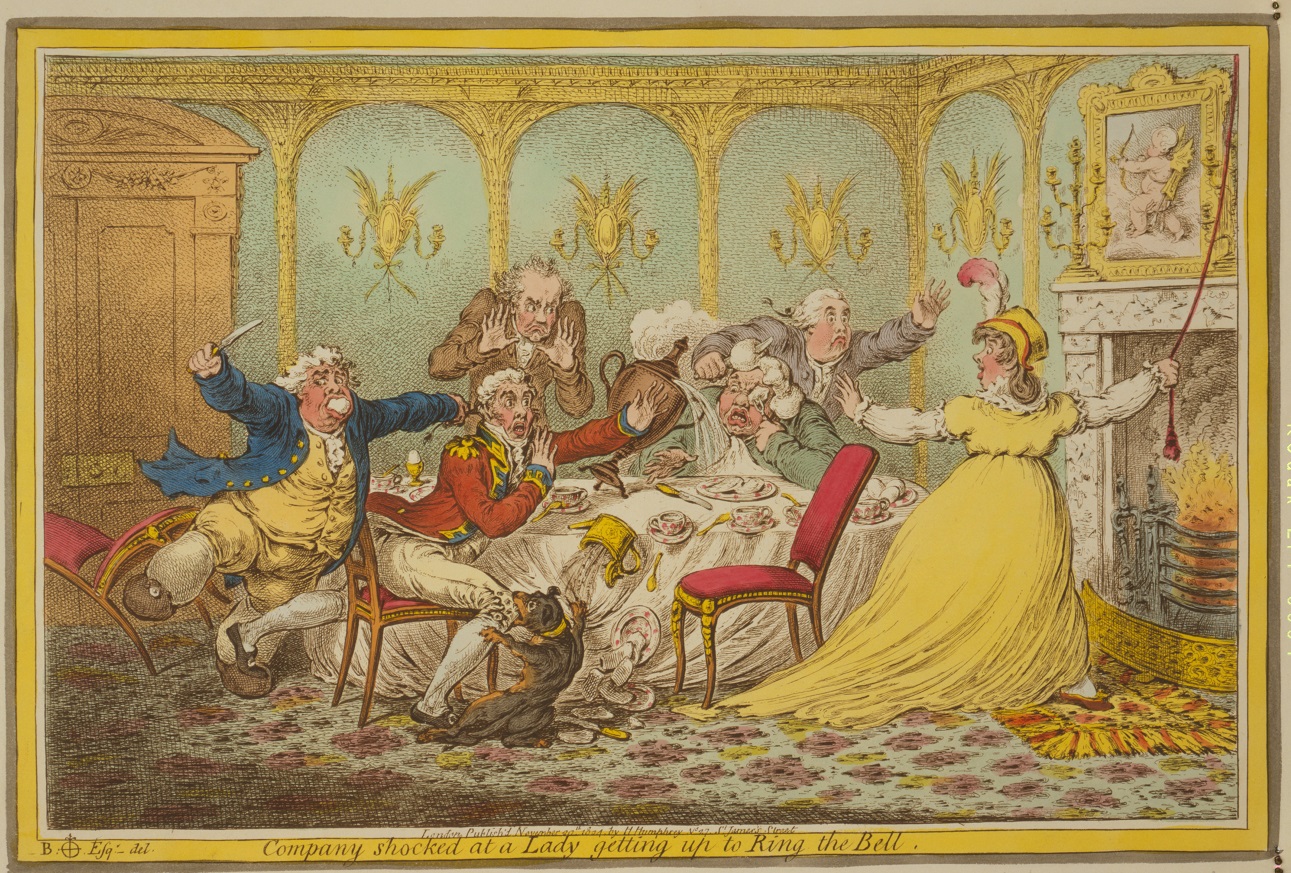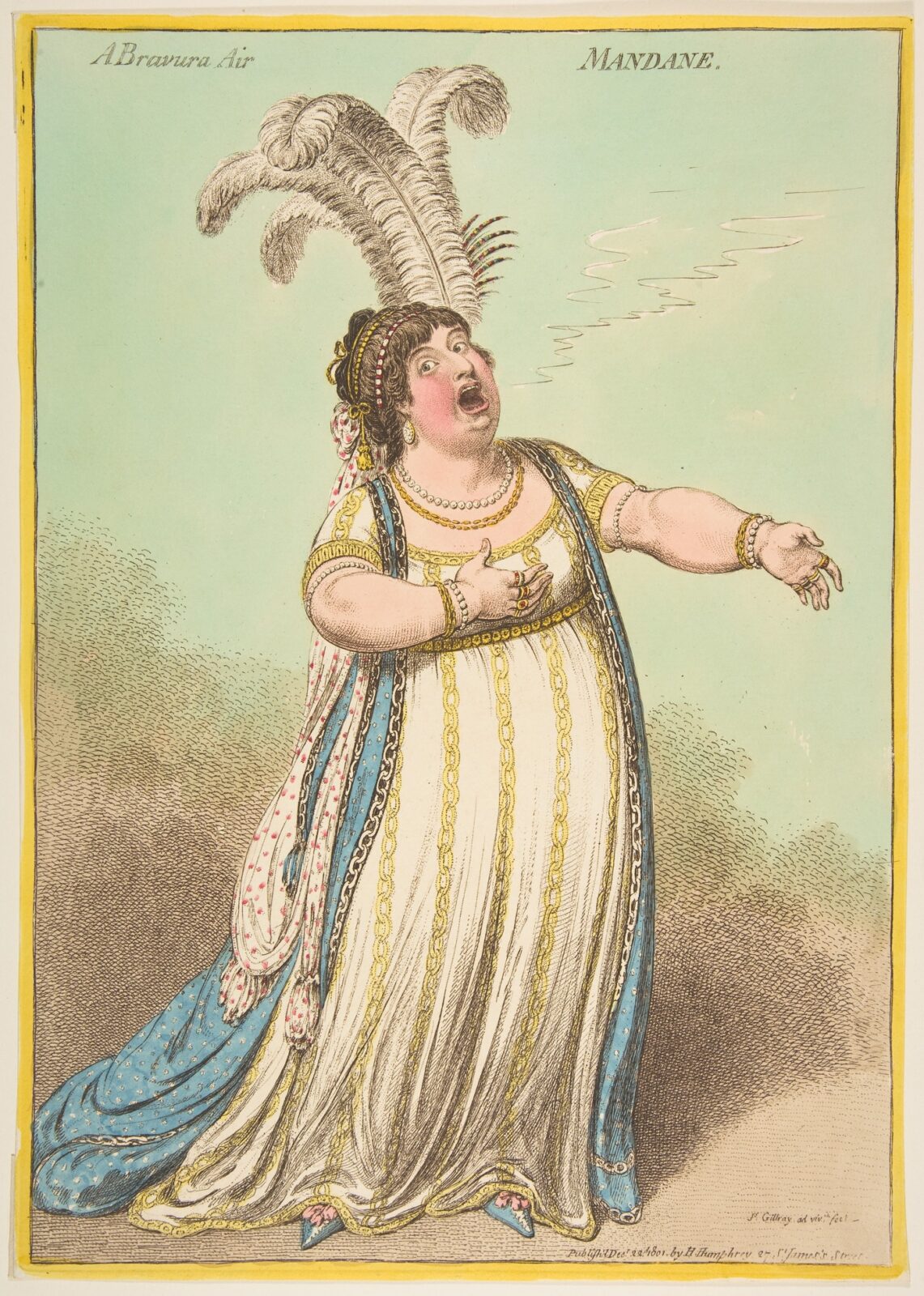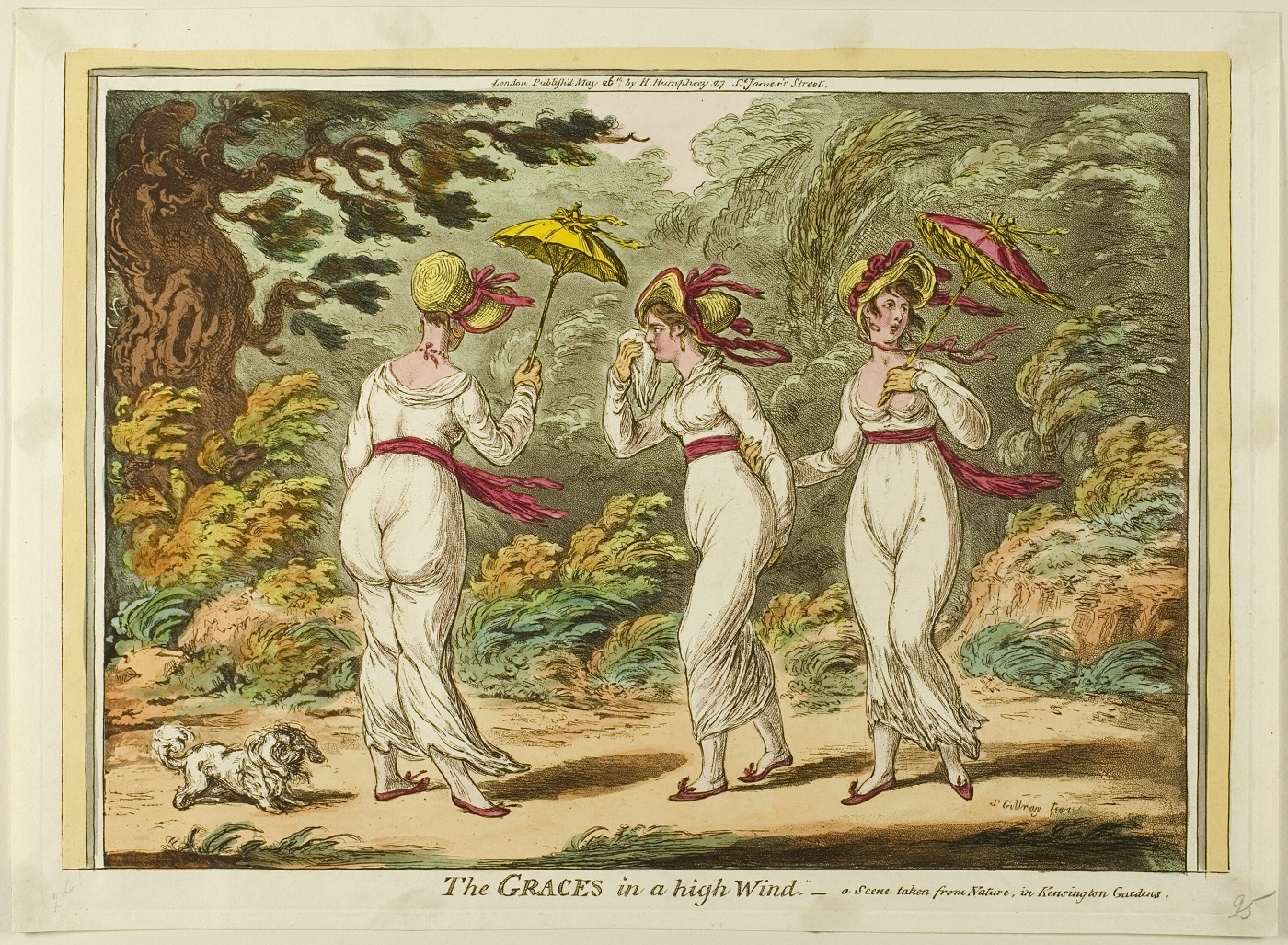Room 4: High Society
Company shocked at a Lady getting up to Ring the Bell
James Gillray, 20 November 1805
Here Gillray turns his attention to the manners of high society. He invites us to a lavish breakfast parlour, decorated with gilt detailing in the shape of palm trees. The attendees are five gentlemen and one lady, who tuck into boiled eggs, bread and muffins. It seems this is the house of a wealthy widow hosting her potential suitors, each trying to outshine one another with postulation and pomp.
But this lady is about to commit a heinous act. She has risen from the table to request some more muffins, crossing the room to tug at a raspberry-coloured piece of rope. Good heavens! A lady ringing a bell-pull!
Her five bad-breathed companions are shocked at such impropriety. In their haste to stop her, disaster ensues: crockery cascades to the floor, the boiling-hot urn crashes down, one man chokes on a muffin, another (whose wig has been speared by a knife) finds a muffin in his eye and a dog bites the knee of another unlucky suitor.
As the widow looks on in bemusement, one can’t help but feel this was part of some kind of test. Which of these potentials could really cope in moments of crisis?
~
A bravura air Mandane
James Gillray, 22 December 1801
This is Gillray’s magnificent tribute to Elizabeth Billington, one of the most celebrated opera singers of the time. Whilst other artists of the day (such as Reynolds) tended to depict her as a doe-eyed musical goddess – passive, mute and slimmed down – Gillray didn’t have time for airbrushing.
He gave us the real ‘Betsy’ Billington, a musical maestro in command of London’s stage. She is gorgeously curvaceous and swathed in luxurious, gold-trimmed fabric and plumes of feathers. What’s more, her mouth is open – she’s actually singing, and singing from the bottom of her lungs. And out of her mouth comes the angelic sound itself: swirling lines floating up and away. Her cheeks are ruddy with the exertion, her mouth wide open and, to steady herself, her head is thrown back, with one hand holding her bosom and another outstretched for balance.
This is the moment she ‘astonished the audience’ with an impossibly tricky ‘new bravura song’. The Covent Garden opera-goers were treated to four minutes of devilishly difficult trills, of passages climbing higher and higher up the octaves, her crystal-clear voice filling the room. Would glasses begin to smash? the audience might have wondered. Would Billington faint? Would she explode?
~
“The Graces in a High Wind.” – a Scene taken from Nature, in Kensington Gardens
James Gillray, 26 May 1810
Fashion is a wonderful subject matter for satire, and Gillray adored making mockery of the changing styles. Here are three fashionable ladies, trying to enjoy a restorative walk in the fresh air. They wear white dresses and straw bonnets trimmed with ribbons. They hold ribbon-trimmed parasols and a handkerchief, and are accompanied by a small dog. Yet any aspirations at elegance are thwarted by the Great British weather. The blustery autumnal breeze makes their silhouettes more revealing than intended. They are ladies – as Jane Austen put it, in a letter to her sister in 1801 – ‘at once expensively & nakedly dress’d”.
It echoes the writings of Edward Topham, who – on a trip to Edinburgh – noted how sartorial aspirations could suffer in the natural elements:
“In walking over it this morning I had the pleasure of adjusting a lady’s petticoats which had blown almost entirely over her head … one poor gentleman, who was rather too much engaged with the novelty of the objects before him, unfortunately forgot his own hat and wig, which were listed up by an unpremeditated puff, and carried entirely away.”
~
That’s it! You’ve reached the end of this virtual exhibition.



